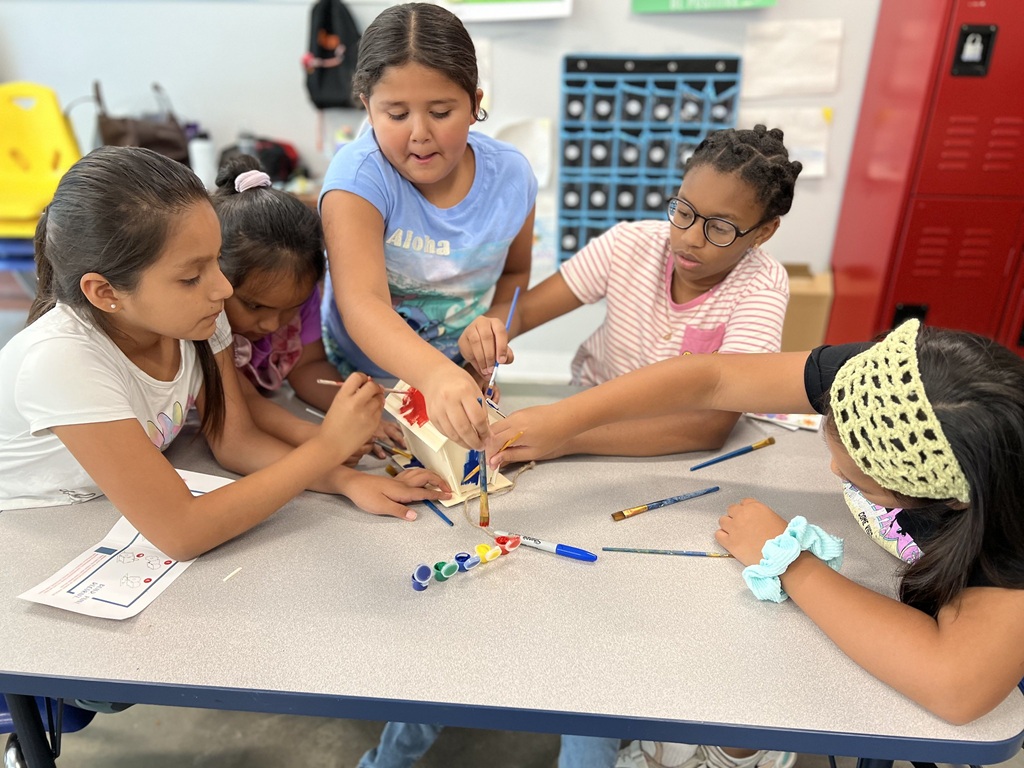
Aspire Afterschool Learning: Transforming the Lives of Arlington Youth
Aspire Afterschool Learning is a beacon of opportunity for underresourced Arlington youth, offering free afterschool and summer programs that foster academic excellence and social-emotional growth. Serving students in grades 3-8, Aspire provides a nurturing environment where currently 150 children, primarily from low-income households and communities of color, receive tailored support to overcome educational barriers. Whether it’s Aspire’s afterschool program or its engaging summer camps, Aspire delivers literacy and STEM-focused lessons, hands-on projects, and mentorship that spark curiosity and build confidence. By partnering with schools and families, the organization ensures students are equipped with the skills and resilience needed to become lifelong learners, all at no cost to their families.
Kars4Kids was pleased to provide a small grant to Aspire Afterschool Learning, recognizing the exceptional caliber of their work in leveling the playing field for children facing significant challenges. We were particularly inspired by their commitment to offering high-quality programming without charging families, ensuring access for those who need it most. Aspire stood out for us because of its holistic approach that combines academic enrichment with social-emotional support to empower students in South Arlington’s Columbia Pike Corridor, where poverty rates are notably high. In this interview with Communications and Development Manager Maggie McCoy, we explore how Aspire’s innovative programs and dedicated staff are transforming lives and strengthening the community.
Kars4Kids: Aspire Afterschool Learning serves students in Arlington, Virginia, with a focus on academic enrichment and social-emotional growth. Can you tell us more about the community you serve and how Aspire addresses their specific needs?
Maggie McCoy: Right now, Aspire serves 150 students who face systemic barriers to educational opportunity. Among our students, 98% come from low-income households, 99% are students of color, 62% live in non-English speaking households, and a majority report that their parents cannot help with homework due to working multiple jobs or having education/language barriers. We have three program sites, which we’ve located near and along the Columbia Pike Corridor of South Arlington, because 12.1% of households in this corridor are at/below the federal poverty line. That’s twice the rate in Arlington as a whole. Our students are talented, smart, curious, and have families dedicated to their success. But they face many obstacles and systemic challenges that make it harder for them to access resources, which is why Aspire is committed to providing them with high-quality support.
We specifically serve historically underserved students in grades 3-8. We focus on those grades because late elementary school is critical to providing a foundation for long-term success. Students not reading well in elementary school are four times less likely to graduate high school on time, which can lead to a lifetime of lower earnings. However, reading proficiency can overcome poverty’s impact with 90% of students in poverty who read proficiently in third grade graduating on time. We also opened a middle school classroom coming out of the pandemic, because students and parents shared that they were really looking for continued support. We provide a crucial bridge and consistent community of support during that transition time.
We adjust our programming a bit every year in response to students’ needs. Last fall, 87% of students entered Aspire testing at least one grade level behind in reading and 90% tested at least one grade level behind in math. We’ve recently implemented a new literacy programming and are in the process of expanding our STEM and social-emotional programming so that we can ensure we’re providing students with the support they need the most.
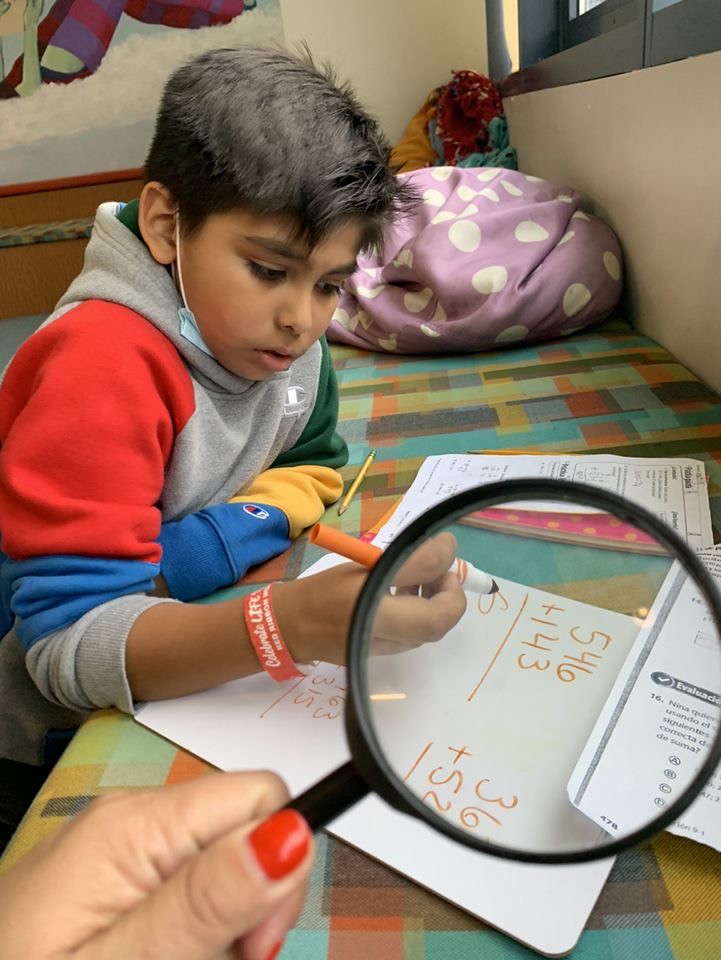 Kars4Kids: How about an overview of your afterschool program? Do the kids come every day? What is Learning ROCKS?
Kars4Kids: How about an overview of your afterschool program? Do the kids come every day? What is Learning ROCKS?
Maggie McCoy: When we were coming up with a name for our program, we asked students, and “Learning ROCKS” is what they came up with! That pretty much sums up what we try to achieve in this program: helping students grow and fall in love with learning.
Students come to Aspire every day after school for three hours. One of our team members picks them up from the bus stop, so that their families don’t have to worry about transportation, and walks them back to Aspire. When they arrive, they receive a free, nutritional meal – we know that students can’t learn on empty stomachs – and then they have a social-emotional lesson. We call these “Mat Meetings,” and they help students build connections with their classmates and teachers, build empathy, and get them engaged. After that, they work on homework with the help of volunteers and teachers. Then, they receive a lesson on topics like literacy, STEAM, culture & current events, health, and nutrition. Before they leave, they also get free choice time to run around with their friends, play soccer, draw a picture, or sit and read.
At different times during the year, students will also work on long-term projects. These help spark students’ curiosity and offer learning opportunities in a different format than the school day. Right now, students are working on projects like designing their dream afterschool space, filming and editing a video about the effects of gentrification, and creating realistic aliens by exploring ecosystems and food webs.
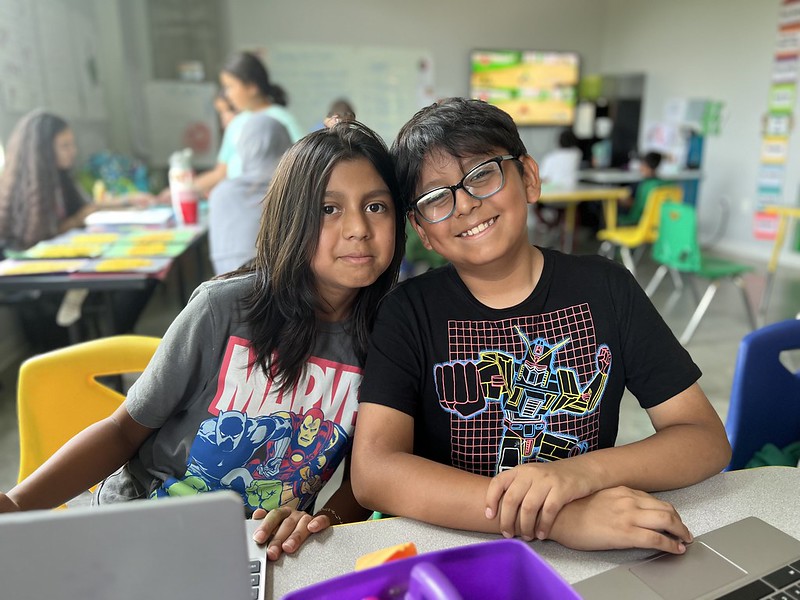
Kars4Kids: Aspire’s summer camp has a yearly theme, right? Can you tell us a bit about that? We’d also love to know how you balance keeping kids engaged during the summer while preventing the “summer slide” in their education.
Maggie McCoy: Our program team chooses a new theme every year and then develops a whole new set of lessons and projects to go along with that theme. It’s a lot of work, but it makes sure that students who attend our summer camp for multiple years can still participate in new, engaging lessons without repeating anything.
Examples of past themes have included “Through the Decades,” where topics included STEM activities that explored important scientific discoveries of the past 50 years. In 2022, our theme was “Communications,” to reinforce the critical skills many students missed out on during the pandemic, such as practicing their handwriting and expressing their emotions in a healthy way. In 2023, students explored “Around the World,” which we picked to highlight the diverse cultural experiences of our students. Last year, students loved the theme of “Avatar: The Last Airbender,” chosen to build on students’ interests in the TV show. Students participated in lessons based on the different elements, such as constructing models of the solar system, building mini electric cars, and tending a Community Garden to learn about healthy eating and sustainability.
This year, I’m excited to share that our theme is “Mythical Realms.” Each week has a different theme, from intergalactic adventures to ancient mythology to legendary beasts, and will feature hands-on activities, creative projects, and engaging academic lessons.
Since our summer camp runs for a full day, we focus on activities like experiential learning and hands-on activities so that the experience feels different than the school day. We include more unstructured play, field trips, and weeks-long group projects, and focus less on one-on-one tutoring and homework help, compared to our afterschool programming. These help keep students engaged, while also making sure that they’re receiving academic support that helps them build on what they learned during the school year and prepare them for starting school again in the fall.
This approach has been really successful. Last summer, among the students who participated in all six weeks of summer camp and had testing data from the spring of 2024 and the fall of 2024, 87% maintained or improved their reading level over the summer break and 65% maintained or improved their math level over the summer break. One student shared, “Thanks for making this the best summer of my life!”
We have also gotten positive feedback from teachers and schools as students return to school better prepared for the school day. One parent shared “I also want to publicly thank you all for all that you guys did during the summer. It really proved successful according to our beginning of the year conferences, so thank you all!!!”
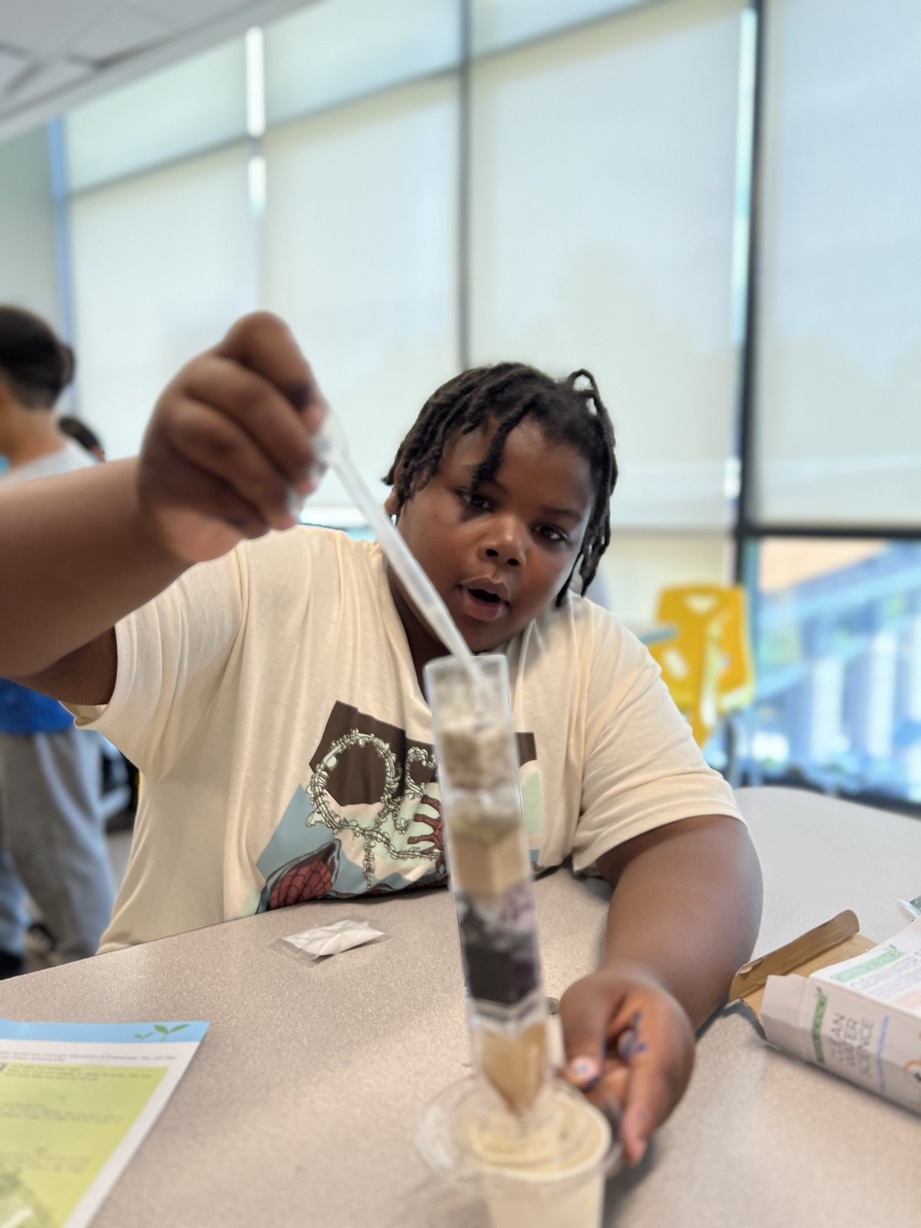
Kars4Kids: Aspire also has an afterschool program specific to students in middle school. How does it work? Why middle school? How are the needs of these students different than those of the younger students you serve?
Maggie McCoy: Before COVID, our program focused on 3rd-5th grade students. However, many of the students who had aged out of our program would keep showing up the next year, looking for a safe space and community. So we created a Middle School Buddies program, where students could have time to work on homework, get a snack, and mentor the younger students a bit. Coming out of the pandemic, we were hearing from our students, families, alumni, and broader community that students who were about to enter middle school weren’t feeling ready. They wanted additional support, so we launched a middle school program and after a successful pilot year, made it a permanent part of our program. It has been in high demand, with a waiting list for every year it’s been open, and provided support to students as they transition from elementary school to middle school, setting them up for success in high school.
In our middle school program, we focus more heavily on study and test-taking skills so that students are prepared for the academic rigor of middle school and later, high school. We’ve also been seeing increased mental health needs among our middle school students, and have been working to enhance our curriculum and programming in that area so we can fully support our students.
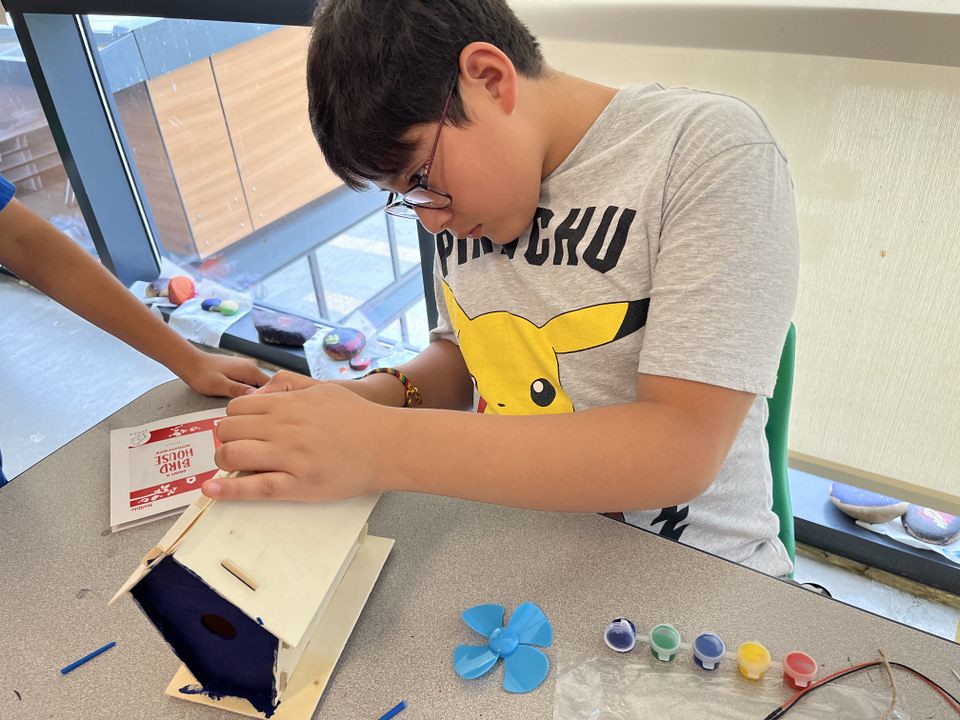
Kars4Kids: Your organization relies heavily on volunteers, including high school students and AmeriCorps members. How do these volunteers contribute to the mentorship aspect of Aspire’s mission, and what do they gain from the experience?
Maggie McCoy: In terms of our high school volunteers, Aspire relies on volunteers to provide personalized support to students who can benefit from highly individualized attention. Many former Aspire students who are now in high school have continued to stay involved with our program through volunteering. One of them shared, “What I like about Aspire is just how welcoming it is. It helped me grow. When you come here, you just turn into a different person. I choose to volunteer here to just help as people did for me, I try to be patient, be kind to them. I want to give back and help these little kids grow, just how they did for me in the past.” Last year, we had 72 high school volunteers who prepared and delivered food for students, assisted AmeriCorps members with daily classroom activities, and read with students to help them improve their literacy skills.
We’re also grateful for our partnership with AmeriCorps that ensures we have a low teacher-to-student ratio in each of our classrooms. These members serve in the classrooms with students every day after school and during the summer, and many also serve in the classrooms of our school partners during the day to provide additional support to students and teachers. Our members gain professional and life skills in education and serving their communities. They receive a two-week orientation, weekly professional development sessions, and monthly coaching to support them and help develop their skills.
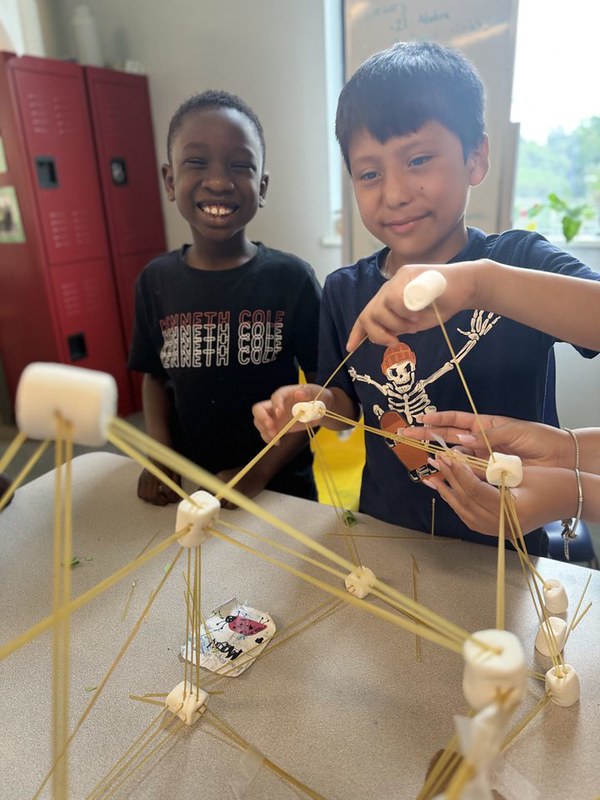
Kars4Kids: Aspire aims to empower students to become lifelong learners. How do you instill this mindset in the kids you serve, and what role does your staff play in making that happen?
Maggie McCoy: We emphasize curiosity and resiliency as much as possible for our students to ensure that they can fall in love with learning and feel confident about pursuing their interests. Many of the historically underserved students we serve enter our program not feeling very confident in their reading and academics, and this lack of confidence spills over into their engagement in the classroom. We work to mitigate this by setting high standards, normalizing failure, and fostering curiosity alongside our reading curriculum, STEM projects, and hands-on lessons.
Our programming also cultivates and honors “student voice and choice.” Students voice their ideas, interests, and feedback, and have ample opportunities to make choices within the program. One example is the project-based learning that we do in the spring, where each class focuses on a long-term project related to their specific interests and needs and puts into action what they’ve been learning.
Another way we do this is by having our team serve as role models for this kind of learning. Our AmeriCorps team leads weekly special interest “guilds” throughout the year about a topic that they’re passionate about and want to share with the students. Popular guilds from the fall included a Gardening Guild where students tended to our Community Garden and transitioned the summer plants to an indoor garden station, an Origami Guild that helped students develop fine motor skills in a fun way while also learning about Japanese culture, and a Nature Guild where students documented the different plants they saw on their nature walks to the creek and also participated in a trash cleanup. We’ve also had a Breakdancing Guild, a Paint and Sip (Juice) Guild, a Theater Guild, a Chess Guild, a Photography Guild, and a whole lot more. These sorts of activities provide students with the opportunity to explore new interests that they might otherwise not have access to, and shows them how fun learning new things can be when they’re passionate about what they’re learning.

Kars4Kids: Maggie, as Communications and Development Manager, you’re involved in sharing Aspire’s story and building support. What drew you personally to this work, and how does your background shape your approach?
Maggie McCoy: Prior to Aspire, I had done some work as a paid tutor for upper/middle income students, as well as a volunteer tutor for historically underserved students. Seeing the differences in the resources that those two groups of students had available to them was really stark. Both groups of students were smart, curious, and interested in learning, but they didn’t have the same sources of support, and they faced different challenges in their lives outside of school. After some work in more policy and research-based settings, I was interested in doing work in the education field where I could more directly see the impact.
I was initially drawn to Aspire in part because I love reading, and I loved the idea of working at an organization with a literacy focus, and also because it’s an organization with a long history of real impact for students. Being able to see that impact and then get to share those stories with our supporters and community members is both deeply meaningful to me and a real joy. Our students will frequently come to the back office to talk to our team members, and I love hearing them talk about their days and showing me their art projects. It makes it easy to talk about all the reasons why Aspire is so important in our community when I’m hearing and seeing what a difference it makes to students every day.
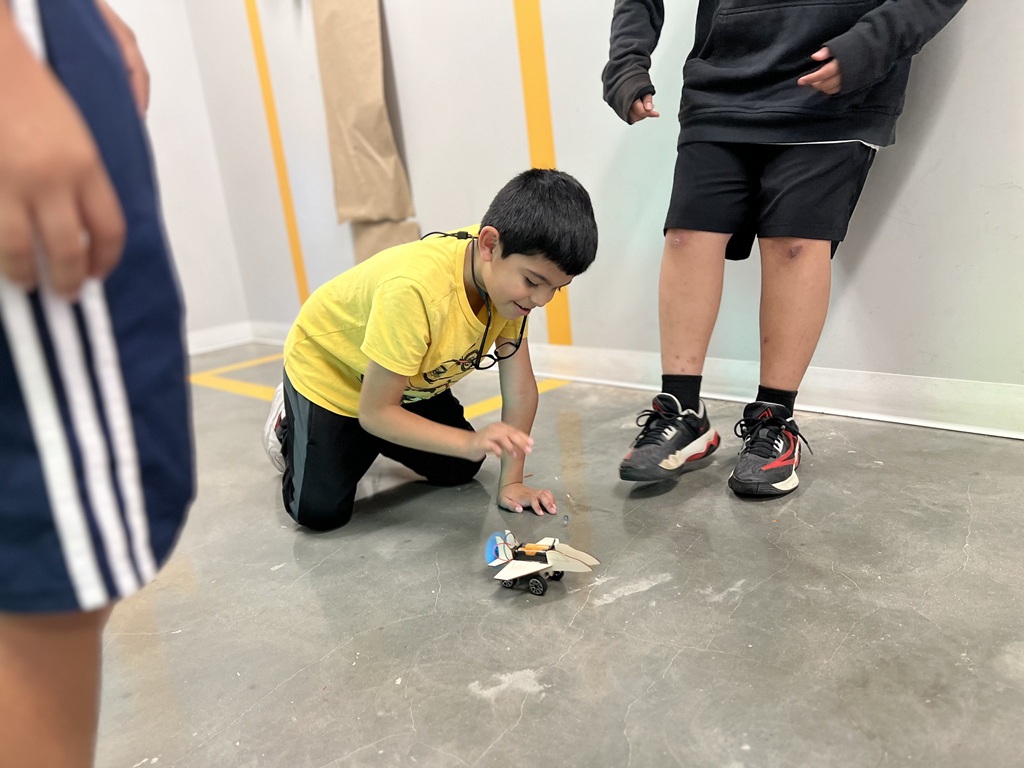
Kars4Kids: What are some of Aspire’s proudest achievements in terms of student growth or community impact?
Maggie McCoy: We’re so proud of each and every one of our students, who are incredibly talented and full of so much energy and passion. Getting to hear them talk about what they’re learning in school, the projects they’re working on at Aspire, and even things like Pokémon cards and soccer players, it’s one of the highlights of my day.
As an organization, we’ve seen consistent student growth in our students every year. Last year, 67% of students improved their reading level and 90% of students were testing on or above grade level for their knowledge of high-frequency/sight words by the end of the year. 69% of students improved their math level, and we saw a 25-point increase for numbers/operations (we emphasize those skills in programming because they are crucial as students enter advanced math classes).
We also saw that 75% of elementary students said they felt comfortable raising their hands in class all/most of the time (an indicator of confidence) by the end of the year. 75% of middle schoolers reported completing homework on time, and 74% reported studying hard all/most of the time, which was a 47-point increase compared to the start of the year.
We’re also proud to be a strong resource for the community. We provide 1:1 and group parent programming on topics like healthy eating on a budget, how to keep your kids safe online, and reading a report card. Many of our families come to Aspire as their first point of contact, and our Parent and Community Engagement Coordinator is able to connect them to additional resources. We’ve actually had so much demand for this type of programming that we’re currently working to transition this role into a full-time, permanent staff position.
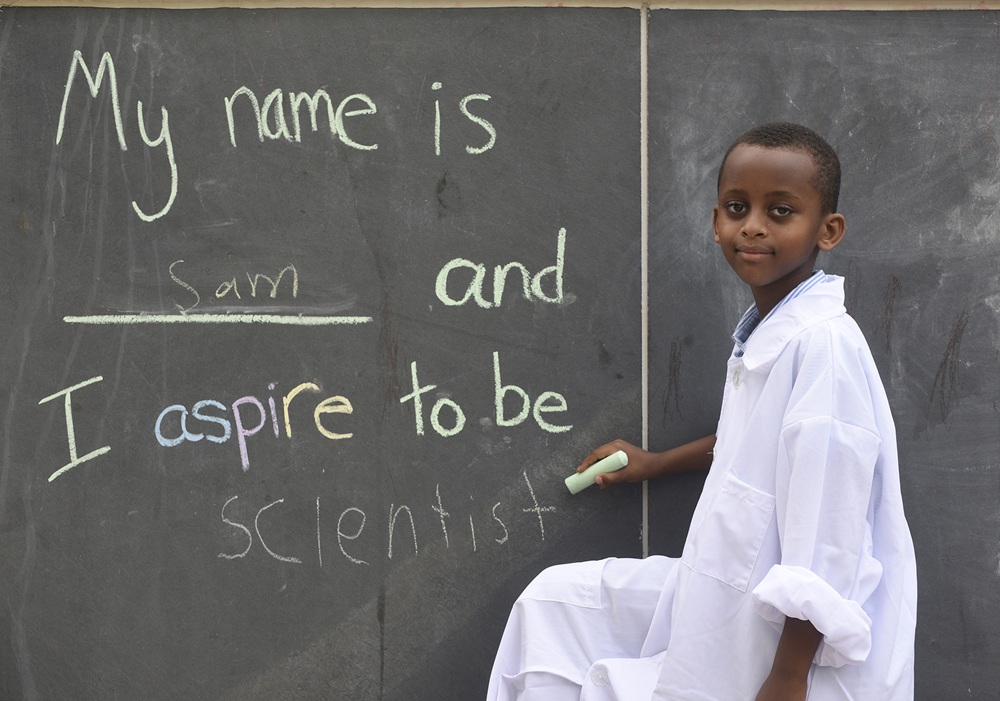
Kars4Kids: Aspire partners with schools and families to support students holistically. Can you give an example of how this collaboration has made a difference for a specific child or family?
Maggie McCoy: So many of our students make incredible progress while at Aspire, and one example is a student who attended our summer camp last year. She attended summer school during the day, then came to Aspire in the afternoon.
Marta, a rising fourth-grade student from our 2024 summer camp, was thrilled to learn more about the different elements and have fun with her friends while school was on break. One afternoon in the summer, she was in the Arts and Crafts room with an AmeriCorps member. As they made bracelets and sketched, she talked about her summer school classes in the public schools and how much she enjoyed having time to play and participate in Mat Meetings at Aspire.
By making our lessons hands-on and incorporating some free choice time into the day, Aspire instilled a love of learning into Marta. Our team combined play and learning in the right amounts to bring her joy and to teach her important skills such as reading, math, and social-emotional strategies. By being that “fun” learning space for students, we ensure that Aspire is a place where they feel safe and able to try new things. We’re able to build on what students learn in school and then engage them in hands-on lessons that keep them learning even after a full day of school or a half day of summer school.
We also saw that impact when she started school again in the fall, with a stronger background in reading and math. In fact, her parents even sent us a message to let us know that during their beginning of year conference with the school, her teacher commented on how much better she was doing!
We’ve also recently deepened our partnership with schools by opening afterschool program sites directly at Title I schools. This partnership allows us to work even more closely with teachers and school staff to ensure that we’re aligning our curriculum with what students are learning during the day, and having regular discussions about individual student needs. Last year, a student at one of these sites saw not only academic growth, but a growth in his confidence as well. He walked into his classroom one day and took tiny, shuffling steps to inch his way toward his seat. “This is how I feel at school,” he explained. He felt frustrated by the things he didn’t know and was struggling to catch up to his peers. Then, he took a bigger step: “This is how I feel at Aspire.” An even bigger step: “This is how I’ll feel in high school.” A huge step: “This is how I’ll feel in college!”
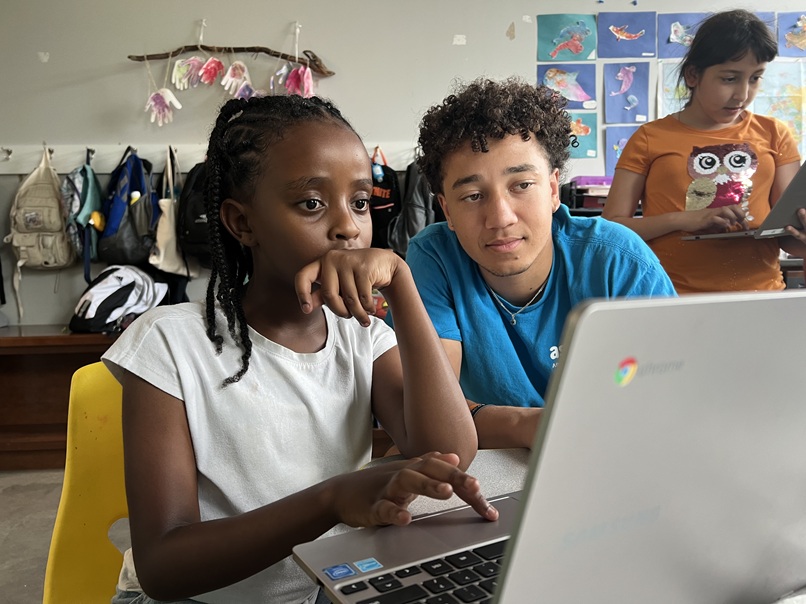
Kars4Kids: What’s next for Aspire Afterschool Learning?
Maggie McCoy: Right now, we’re in the last few months of our current three-year strategic plan (July 2022 – June 2025). We’re proud to say that we’ve met all of the goals laid out in that plan, including doubling the number of students served, keeping our programs at no cost to families, and growing our programmatic partnerships.
Our new plan is still being developed in partnership with our students, families, alumni, key programmatic partners, team, and board, but I can share a few goals that we intend to incorporate. One of the major areas that we’ll be focusing on is enhancing our curriculum. Students are entering Aspire further behind previous cohorts and with increased challenges. As such, we are working to expand and enhance our mental health and STEM programming, as well as refining our Literacy Curriculum and recruiting more volunteers to provide students with individualized support. For instance, we are working to partner with another nonprofit and bring in a therapist who could work with students and expand Aspire’s social-emotional learning curriculum.
Additionally, as I shared earlier, we have also seen increased demand from parents for programming. Currently, Aspire provides 1:1 and group programming for parents, led by our bilingual Parent Coordinator, an AmeriCorps member who is the parent of an Aspire alum herself. Many parents share that they come to Aspire as a first point of contact for issues like getting children tested for learning challenges, reading report cards, and connecting them with additional community resources. To meet these needs, we are working to transition this role into a full-time staff position.
I’m also excited to share that this summer, Aspire will be opening a new STEM Makerspace for students. This will be the only no-cost Makerspace aimed at 3rd-8th grade students here in Arlington, and it’s going to allow us to bring in more partners, expose students to STEM-related academic and career pathways, and have more flexible space for various functions – science labs, coding classes, robotics demonstrations, and more.
Aspire has grown rapidly in the past three years by doubling the number of students we serve and we’ve seen impressive growth in our students. Going forward and building on the current needs of our community, we want to make sure that we’re providing all of these students with the robust support they need to meet the increased challenges they’re facing in their academics and social-emotional/mental health.